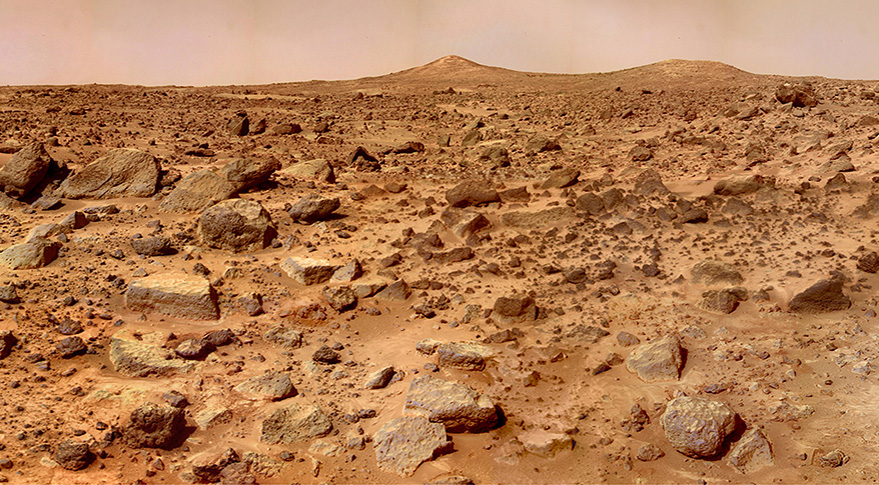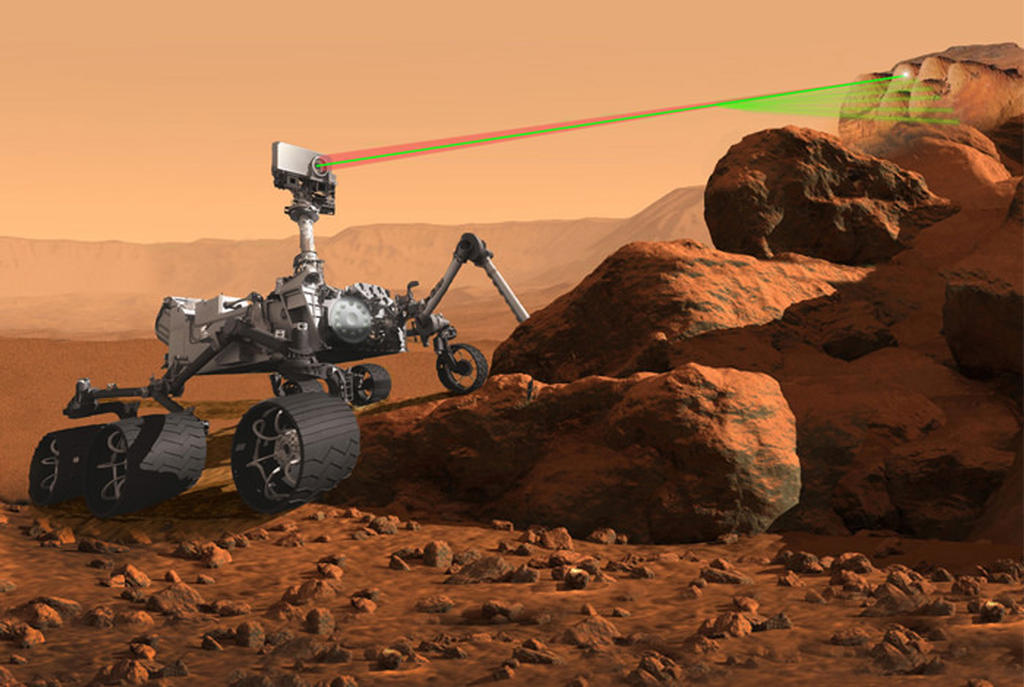NASA Eyes Sample-Return Capability for Post-2020 Mars Orbiter

WASHINGTON — A Mars orbiter NASA plans to launch in the 2020s could carry the mechanisms needed to collect and store sealed Martian surface samples for a return trip to Earth, an agency official said here Oct. 5.
The technology is crucial for the long-term, multimission, sample-return campaign that is quietly driving NASA's robotic Mars exploration program. It is nonetheless conspicuously absent from the agency's well-publicized "Journey to Mars" public relations campaign and barely a blip in official budget documents drafted each year to justify construction of new Mars rovers and satellites.
The orbiter would be NASA's next strategic mission — that is, a mission custom-ordered by the agency and not selected through a competition that includes proposed missions to other places — to the Red Planet after the Mars 2020 rover, which is scheduled to launch that year to cache surface samples and leave them on the ground for later retrieval.
The orbiter would be designed for a five-year mission and could launch as soon as 2022, Jim Watzin, NASA's Mars exploration program director, told members of the NASA Advisory Council's (NAC) planetary science subcommittee here during a meeting at NASA Headquarters.
Watzin first mentioned the orbiter publicly earlier this year, characterizing it primarily as a telecommunications package to replace the aging Mars Odyssey, which today relays data from surface assets such as the Curiosity rover back to Earth over NASA’s Deep Space Network.
In successive public meetings this year, Watzin has described more and more potential features for the spacecraft, including optical communications gear and a solar-electric propulsion system that would dramatically increase the spacecraft's orbital maneuvering capabilities. The orbiter also would carry at least one remote sensing instrument to ensure that, whatever else it does, it can contribute to Mars science.
Watzin said NASA is now considering adding "the sample rendezvous capture and return capability, which allows us to retrieve the sample from orbit and prepare it for the return trip home."
Breaking space news, the latest updates on rocket launches, skywatching events and more!
Implicit there is the idea that what Watzin now calls a "multi-function orbiter" would pluck samples cached by Mars 2020 from a future Mars ascent vehicle that would deliver the samples to Martian orbit. From there the orbiter would return the samples back to Earth.
That ascent vehicle, which like the orbiter is only a proposal at this stage with no approved funding, might be a part of the Mars rover that follows Mars 2020 and sweeps up the samples Mars 2020 plans to collect. Alternatively, the ascent vehicle might be a successor to the sweep-up-only rover, depending on how — and if — NASA decides to try and retrieve the Mars 2020 samples.
Whether the orbiter would perform or merely demonstrate sample capture and return capabilities is still being discussed, Watzin said. If it left Martian orbit, it would leave the same hole in NASA's telecommunications infrastructure that the increasingly complex spacecraft was conceived to fill, he noted.
Watzin originally pegged a 2022 launch for the orbiter, but with scientists in the Next Orbiter Science Analysis Group piling on more payloads, a 2024 date might be more realistic, according to an abstract of a presentation the NASA-chartered group plans to give at the American Geophysical Union's fall meeting in San Francisco Dec. 14-18.
Either way it remains uncertain whether the White House will approve the mission in the first place. "We don't have the budget for it yet," Watzin acknowledged. NASA did not ask for funding for the mission in the 2016 budget request the White House delivered to Congress in February.
While the White House has refused to commit outright to a Mars sample-return campaign because of the associated long-term expense, the Obama administration has shown some willingness to let NASA put the pieces of such a campaign in place.
In 2013, for example, the White House agreed to let NASA build the sample caching Mars 2020 rover out of spare parts from the $2.5 billion Curiosity rover that has been exploring Mars since 2012.
NASA could have a similar idea in mind for the orbiter, at least with regard to the science payload. The instruments scientists are considering are all far advanced on NASA's Technology Readiness Level scale, "so we don't have to invent anything to do the additional reconnaissance that we have to do," Watzin said.
This story was provided by SpaceNews, dedicated to covering all aspects of the space industry.
Dan Leone is an editor and reporter for the ExchangeMonitor Publications covering the Department of Energy and Department of Defense nuclear weapons programs. From 2011 to 2016, Dan was the NASA reporter for the space industry publication SpaceNews, where he covered U.S. space agency policy, news and missions. He also produced the SpaceGeeks podcast showcasing interviews with space industry professionals. Dan earned a bachelor's degree in public communications from American University. You can find his latest project on Twitter at @leone_exm.


